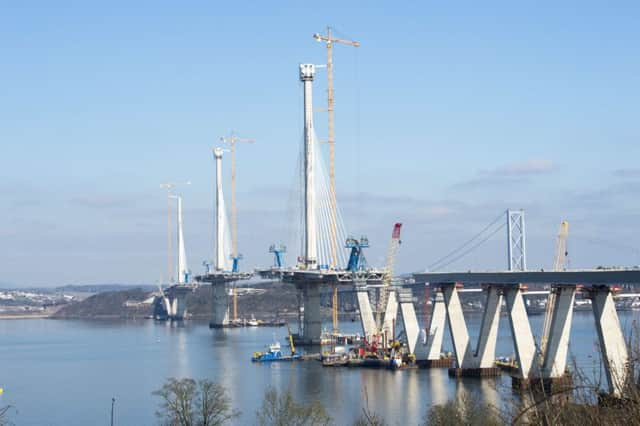Alastair Dalton: Queensferry Crossing will be worth waitign for


And now the bridge designed to put all that behind us has itself run into difficulties with the weather.
The Queensferry Crossing will not now open until mid-May next year, rather than in December as expected, after spates of bad weather stretching back to last September caused mounting knock-on delays.
Advertisement
Hide AdAdvertisement
Hide AdIt remains to be seen if that is down to bad luck or bad planning, since contractors had already included a year’s worth of contingency time – 20 per cent of the total build time – for such disruption in the five-year construction project.
That was based on analysis of past weather data for the Forth, which suggests the scheme ran into unusually prolonged strong winds.
But ironically, officials had thought the biggest weather risk was during construction of the towers and their foundations. In fact, it turned out to be the later installation of the bridge deck and support cables which got blown off course by the wind.
The muted criticism of the delay from the Conservatives and Labour on Wednesday was eclipsed by reaction of the Liberal Democrats, who said it showed “a project in abject distress”.
That was over the top, but the party’s question about how the loss of 25 days to weather in the past few months in could lead to the bridge opening 180 days late highlighted that the complexities of the problem could have been better communicated.
It turns out that this recent bad weather was just the final straw, following delays caused by strong winds since September.
I understand that, crucially, this has resulted in the most weather-susceptible work being pushed back to the parts of the year when the weather is likely to be worst – which in turn has affected the rest of the programme.
That also goes for the remaining parts of the project, including surfacing the bridge’s carriageways, which need mild, dry conditions. That will now have to be done during the winter rather than the autumn.
Advertisement
Hide AdAdvertisement
Hide AdAs a result, part of the extra five months required to finish the job will itself be contingency time to allow for further weather delays. Only time will tell whether it will be enough.
Unlike the travel hiatus caused by the Forth Road Bridge, there is an element of “so what?” about the Queensferry Crossing delay. After all, the original threat of vehicle restrictions on the existing bridge because of its weakened main cable have been lifted, following further inspections. There will also be no extra cost to the taxpayer – it will be borne by the private sector construction consortium.
The Queensferry Crossing should noticeably improve cross-Forth road travel, even with only the same number of lanes in each direction.
The most significant bonuses brought by the new structure include a hard shoulder beside each carriageway, which should cut delays caused by breakdowns and crashes.
The crossing will also be a 70mph motorway, unlike the previously 50mph Forth Road Bridge (now 40mph because of the roadworks).
Windproofing should mean it never closes, in contrast to the frequent restrictions hampering drivers, especially over recent winters.
There’s also the benefit to bus passengers, who will effectively have the Forth Road Bridge to themselves when other traffic switches across.